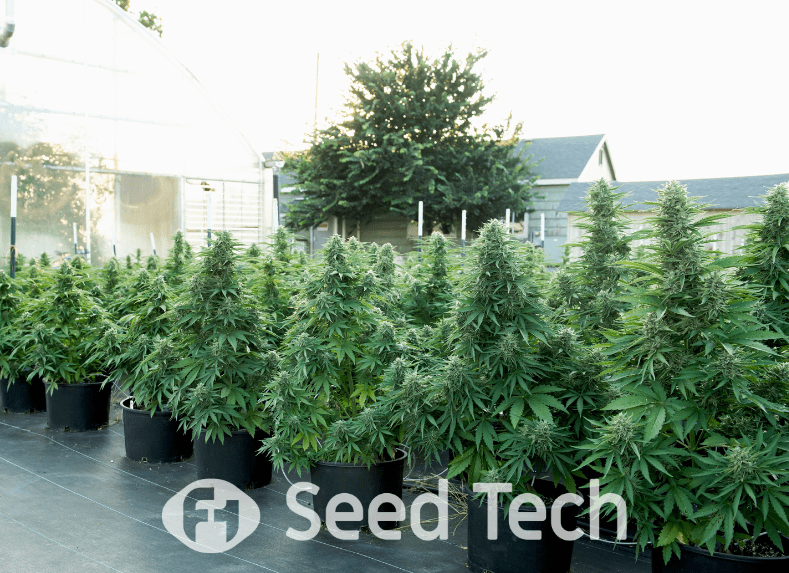Common Problems with Autoflowering Cannabis
Stunted Growth
Causes of Stunted Growth
Stunted growth is a common problem encountered by growers of autoflowering cannabis plants. This issue arises when the plants fail to reach their full potential in terms of size and yield. Several factors contribute to stunted growth, including nutrient deficiencies, improper lighting, and overwatering. Nutrient imbalances, particularly nitrogen deficiencies, can hinder the plant’s ability to develop properly. Inadequate or incorrect lighting can also impede photosynthesis, slowing down growth. Overwatering, on the other hand, suffocates the roots and inhibits nutrient uptake.
Solutions for Stunted Growth
Addressing stunted growth in autoflowering cannabis requires implementing specific solutions to revive and promote healthy plant development. Firstly, ensuring a well-balanced nutrient regimen tailored to the plant’s specific needs is essential. This includes providing adequate levels of nitrogen, phosphorus, and potassium, along with other essential micronutrients. Secondly, optimizing the lighting setup is crucial. Using high-quality grow lights with the appropriate spectrum and intensity can significantly enhance photosynthesis and stimulate growth. Additionally, maintaining proper distance between the lights and the plants prevents light burn or insufficient light penetration. Lastly, establishing a consistent watering routine is vital. Allowing the soil to dry out slightly between waterings helps prevent overwatering and promotes healthy root growth. Monitoring the plants closely, adjusting nutrient levels, light exposure, and watering habits as needed, will facilitate the recovery and encourage robust growth of autoflowering cannabis plants.
Nutrient Deficiencies
For a basic overview of nutrients in Cannabis cultivation and how to manage them, read this article here.
Identifying Nutrient Deficiencies
Identifying nutrient deficiencies in autoflowering cannabis plants is crucial for maintaining their overall health and promoting optimal growth. Several signs can indicate specific nutrient deficiencies. For instance, yellowing or discoloration of leaves may indicate a lack of nitrogen. In contrast, stunted growth and pale leaves often point to insufficient phosphorus. If the leaves exhibit yellowing between the veins, it could indicate a magnesium deficiency. Additionally, spotting or browning of the leaves might suggest a potassium deficiency. Identifying these visual cues and understanding the nutrient requirements of the plant are essential for effective remediation.
Correcting Nutrient Deficiencies
Correcting nutrient deficiencies in autoflowering cannabis plants is crucial to restore their health and promote optimal growth. Once a deficiency is identified, appropriate measures can be taken to rectify the issue. First and foremost, adjusting the nutrient solution is essential. Providing the deficient nutrient in the appropriate concentration can help restore balance. This may involve adjusting the pH levels to ensure optimal nutrient uptake. Foliar feeding, where a nutrient solution is sprayed directly onto the leaves, can also be beneficial in addressing deficiencies quickly. Additionally, carefully monitoring the plants and adjusting the nutrient regimen accordingly is crucial. Regularly inspecting the foliage for signs of improvement and making necessary adjustments will aid in correcting nutrient deficiencies and promoting healthy growth in autoflowering cannabis plants. Seeking guidance from experienced growers or consulting reliable resources can provide valuable insights for addressing specific nutrient deficiencies effectively.
Overwatering and Underwatering
Signs of Watering Issues
Recognizing signs of watering issues in autoflowering cannabis plants is crucial for maintaining their health and preventing potential problems. Overwatering can lead to root rot, nutrient deficiencies, and stunted growth, while underwatering can cause wilting, nutrient lockout, and stress. Signs of overwatering include drooping leaves, yellowing leaves, and a damp or waterlogged soil. On the other hand, underwatering is evident when the leaves become droopy, brittle, or curl up. Additionally, the soil may appear dry and crumbly. Monitoring the plants closely and assessing the moisture levels of the soil is vital to identify and address watering issues.
Balancing Watering
To prevent overwatering and underwatering, establish a regular watering schedule and adjust based on the needs of your plants. Remember, the amount of water needed can vary based on factors such as the size of the plant, the growing medium, and the environment.
Preventive Measures for Common Problems with Autoflowering Cannabis
Proper Nutrition
Ensuring your auto-flowering cannabis plants receive proper nutrition is crucial. Regularly test your soil or growing medium and adjust your nutrient solution as needed.
Adequate Watering
Maintaining a balanced watering schedule can help prevent many common problems. Monitor your plants closely for signs of overwatering or underwatering, and adjust your watering practices accordingly.
Optimal Lighting
Providing your auto-flowering cannabis plants with the right amount of light can significantly impact their health and yield. While these plants don’t require specific light cycles to flower, they still benefit from a consistent light schedule.
Conclusion
Growing auto-flowering cannabis can be a rewarding experience, but like any gardening endeavor, it comes with its own set of challenges. By understanding the common problems associated with autoflowering cannabis and how to address them, you can ensure healthy and productive growth. Remember, the key to successful cultivation lies in careful observation, proper care, and a little bit of patience.
FAQs
- What is auto-flowering cannabis? Autoflowering cannabis is a type of cannabis plant that automatically switches from the vegetative growth stage to the flowering stage with age, regardless of the light cycle.
- What are some common problems with auto-flowering cannabis? Common problems include stunted growth, nutrient deficiencies, and issues with watering.
- How can I prevent stunted growth in my auto-flowering cannabis plants? Ensure your plants are receiving the proper nutrients, are not being overwatered, and are kept in a consistent and appropriate light and temperature environment.
- How can I correct nutrient deficiencies in my auto-flowering cannabis plants? Use a balanced cannabis-specific nutrient solution and regularly test your soil or growing medium.
- How can I prevent overwatering and underwatering my auto-flowering cannabis plants? Establish a regular watering schedule and adjust based on the needs of your plants. Monitor your plants closely for signs of overwatering or underwatering.

